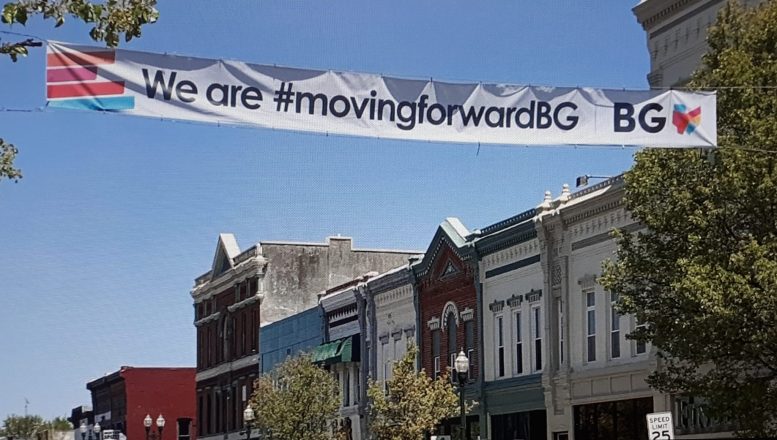Everyone knows the numbers.
About 40,000 Ohioans have contracted COVID-19, 2,500 have died. That’s a piece of the 2 million infected Americans, more than 114,000 of whom have died in the pandemic since January.
The data are nearly ubiquitous, a click away.
Absent from the Ohio Department of Health’s website, however, is comprehensive information on where Ohioans were exposed to the new coronavirus that causes COVID-19.
Did the cases contract the virus from the workplace? An outbreak at church? A night at the recently reopened bars?
“We’re moving so fast through contact tracing efforts, we don’t have the resources to run statistical analyses,” said Kevin Brennan, a communications officer with the Cuyahoga County Board of Health.
He pointed to detailed data on cases, fatality rates, hospital capacity, and a spread of other critical information the health department offers, but said there’s no data available on where the virus is reaching people.
But he, as did several epidemiologists and public health workers in interviews, said it would be on the Ohio Department of Health to track the specific locales and patterns between outbreaks.
ODH Press Secretary Melanie Amato did not answer questions about how ODH tracks known outbreaks or where they’re occurring. She referred questions to the locals who handle contact tracing.
Department Director Dr. Amy Acton, minutes after announcing her resignation, did not answer similar questions at a press conference Thursday, instead offering best practices like wearing masks and avoiding congregate settings.
She did, however, acknowledge some people are getting sick from the workplace.
The bulk of Ohio’s caseload, based on available state data, traces to state prisons (4,900 cases), health care workers (5,900), and nursing homes (8,900 cases among staff and residents since April 15).
Tracking the rest of the caseload then becomes an effort of calling Ohio’s patchwork of county and municipal health departments and requesting anecdotal data.
Clark County Combined Public Health District Commissioner Charles Patterson shared one trend he’s observed: Most spread comes from congregate settings where people aren’t wearing masks. He specifically mentioned a funeral that spawned 13 cases, and an office party that seeded another outbreak.
Clark County’s caseload is less than 400, 18th by county, since the first known case in January.
Along with following privacy laws, some health departments err on the side of privacy more generally. For instance, officials detected an outbreak at Dole Food Company’s salad plant in Springfield April 22. The department did not release information about the plant until a reporter asked for it May 19. Now, 37 workers are known to be infected.
“Typically, we don’t divulge information about a private business unless A, it already leaked out and everyone knows, or B, they come out,” Patterson said.
In Hamilton County, Mike Samet, a public information officer, said there are too many people with too much exposure to really pin down specific infection sites for different cases.
“We have not identified a single pattern yet where we could point to it and say, because you went to Joe’s bar and grill Tuesday night, that’s how you got this,” he said.
There are more than 3,000 known COVID-19 cases, 3rd most by county, in Hamilton since January.
When asked about cases associated with recent protests that have taken over streets in the county, Samet could only cite one known case tied to the protests: his son.
In Franklin County, which has more cases than any other Ohio county, Assistant Health Commissioner Alex Jones said the state disease reporting system is more effective for counties to input data rather than query for output info.
While she couldn’t offer specifics, she listed some observable patterns.
“Some of the trends that we see: workplaces are a common location, also, anytime individuals are doing any type of a gathering with friends or family … places of worship, even some grocery stores,” she said.
When he deals with a Clark County outbreak, Patterson said he urges companies and businesses to just cough up the information publicly.
Just like the virus, word will spread.
“This is not a scarlet letter,” he said. “This is just life in Ohio right now, and you’re better off getting in front of it.”
***
Also from Ohio Capital Journal:
Ohio faces second year with no executions
When Ohio Gov. Mike DeWine last week delayed three more executions into 2022 and 2023, it meant that 2020 would be the second consecutive year in which the Buckeye State had engaged in no judicial killings.
The delays beg the question: Will the death chamber at the Southern Ohio Correctional Facility ever be used again in a state that has executed the eighth-most people in the modern era?
In issuing the most recent order for reprieve, DeWine cited a familiar reason, saying the executions couldn’t proceed “due to ongoing problems involving the willingness of pharmaceutical suppliers to provide drugs to the Ohio Department of Rehabilitation and Correction (DRC), pursuant to DRC protocol, without endangering other Ohioans.”
The governor has delayed all executions since January 2019, when press reports said a federal judge had likened the state’s execution method to torture and then showed the elaborate steps officials were taking to hide from drug makers their plans to use the companies’ products in the Ohio death house. READ MORE





